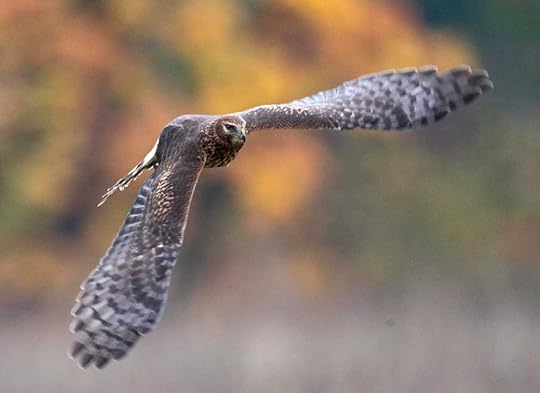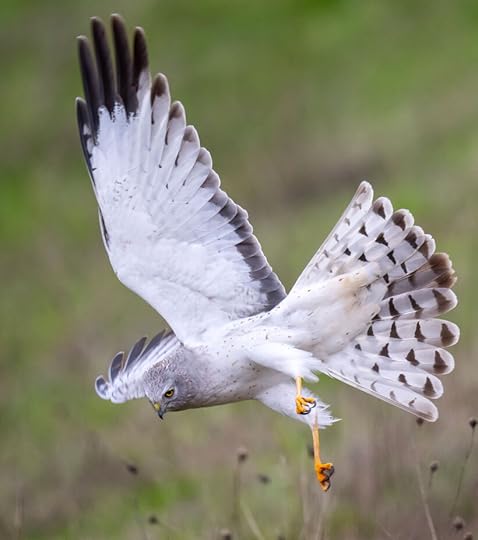A Close Hawk Encounter
Yesterday I had a close encounter with a hawk like this female Northern Harrier.
 Female Northern Harrier – Robin Loznak photo
Female Northern Harrier – Robin Loznak photoI was taking my daily walk on a beautiful sunny afternoon, trekking uphill past the farm’s upper barn to the broad field above. As I occasionally do on the uphill climb I stopped for a breath and turned around to observe the panorama below me and to enjoy the glorious perspective that widens with each step in elevation–the forested mountain range in ranks from dark-green to blue, the verdant middle plain, the nearer skeletal oaks.
With startling suddenness the huge hawk came up behind me and swooped over my left shoulder and down the road in front, maybe three or four feet off the ground, shimmery rich-brown wings spread. Soundless. Hovered not six feet away. No sign of fear, though she had to know I was there. The moment felt long, time suspended. As I watched in awe, she made a sharp right turn and flew out over the green slope beside me, the bright-white clump of feathers on her rump clearly identifying her as a Northern Harrier. The brown wings and back suggest she was probably a female. She seemed to float above the grass, tilting this way and that, then turned again and soared downhill out of sight.
I caught my breath in wonder.
 The place
The placeReaders who have followed my work may recall my intrigue with the white hawks that seemed to be harbingers of good news from time to time, beginning with the one that swept in front of my office window, then flew low above the road as if leading my grandchild and me up the hill. Leading where, we didn’t know, but it felt quite magical. A hawk like him would appear one day when my son-in-law Robin had his camera handy, just in time to be added to pictures in my book A Place of Her Own.
Some of the Northern Harrier males that visit our property are white on the underside with the black wing tips and pale ashen backs, like the one below that Robin photographed more recently. When they fly they appear quite white. The females can be mistaken for juveniles, which are also brown on backs and wings, but females have whitish undersides with brown streaks like the one in the top photo, while juveniles have buffy undersides without the streaks. These birds are commonly called Marsh Hawks. My thanks to Robin for all these hawk photos.
 Male Northern Harrier – Robin Loznak photo
Male Northern Harrier – Robin Loznak photoThe hawk that arrived in time for the book, shown below, also has the white coloring that led me to call them white hawks.
 Male Northern Harrier, picture from the book – Robin Loznak photo
Male Northern Harrier, picture from the book – Robin Loznak photoI hope the lovely one that came yesterday promises good news. Her presence certainly lifted me up.



